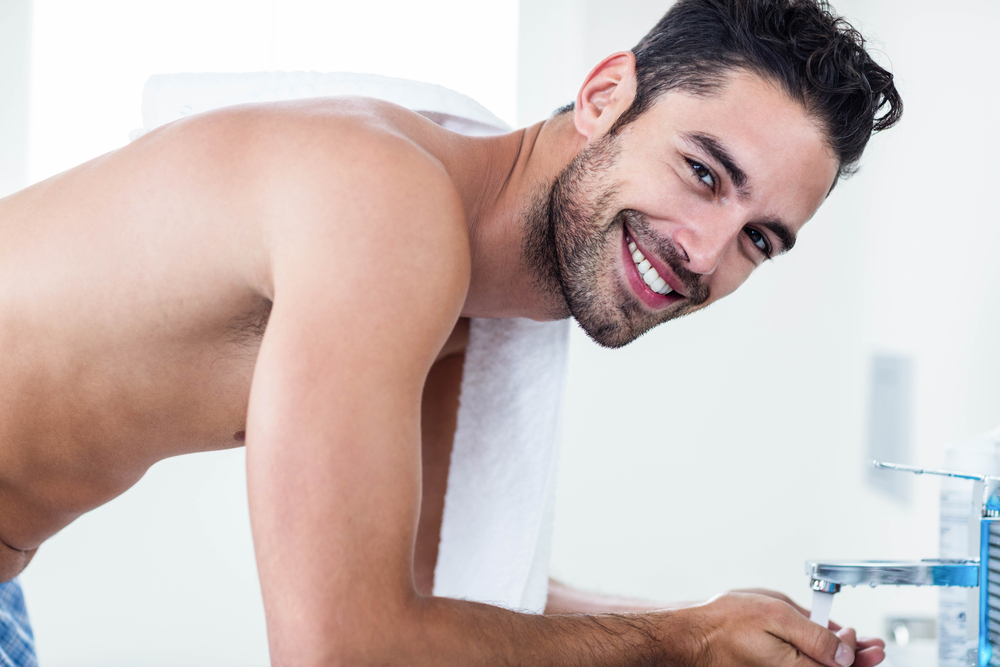Lifestyle Changes For Better, Healthy & Glowing Skin

In the past decade, there has been an unmistakable shift in the personal care industry. For the first time in well, ever, brands like Beau Brummell are finally catering towards men. What some in the industry aren’t sharing, however, is that great skin isn’t just a result of using the right products – Lifestyle is just as important, if not more so. Everyone is different, so the key is to identify your own challenges, and develop a recipe for success with not just a combination of products, but also a change in everyday habits. In this article, we’ll dive into the two most common ailments guys have with their skin, and then lay out no-nonsense strategies to overcome them.
How to Deal with Adult Male Acne
The “A” word isn’t just an issue that plagues pimply teens. In fact, men are more likely to continue to struggle with acne into adulthood. Why, you ask? It’s in the biological makeup of our skin. Did you know that men have, on average, skin that is 25% thicker and denser than women’s skin? Or that men have a larger number of pores on their skin? Those pores aren’t just more abundant, they’re also larger. Combine that with all that manly sweat and you start to notice a unique biological composition to men’s skin, which points to a separate set of issues that men need to pay attention to.
To begin, let’s identify the causes of pimples. Each pimple represents a single, infected pore. Most guys get pimples around their face, shoulders, and back because those areas contain more sebaceous glands – Oil-producing glands that secrete sebum to lubricate and protect our skin and hair. Men’s sebaceous glands are more active than women’s, rendering men’s skin oilier on average. That oil is important, because it plays a huge part in causing pimples. When a pore gets filled with sebum, and blocked off with dead skin, it’s likely going to become infected, inflamed, and irritated, which will lead to a pimple. There are many kinds of pimples – Whiteheads, blackheads, cysts, pustules, and papules. Obviously, you don’t want any of them plaguing you, so here are some preventative tips.

Lifestyle Change
Take note of your pillowcases. Your face spends more time pressed against a pillowcase than it does anywhere else in this world. If you’re not changing your pillowcases at least once per week, your pillowcase may just be the source of your acne. Think of all the sebum and sweat that is produced throughout the 8 or so hours you are sleeping, all that is getting absorbed into the fibers of your pillowcase, building up a bacterial cocktail you don’t want to put your face on.
Pro tip: Change to silk. Silk won’t absorb nearly as much as cotton, making it a better option for your pillowcase.
Routine Change
We’ve established that acne is a product of bacteria-laden sebum getting trapped in a pore by dead skin. So, it’s logical that if you eliminate the dead skin, acne can be prevented. If you suffer from acne, try exfoliating. If you do exfoliate and still suffer from acne, try to exfoliate more often. You don’t want to overdo it, but it makes sense to exfoliate 2-3 times per week, especially if you have very oily skin. For a spa-like experience in the comfort of your own home, try adding an activated charcoal face mask into your skincare routine.
How to Deal with Dry Skin
For our skin to feel as comfortable and healthy as possible, we want it to be nicely moisturized. Many men mistake oiliness for moisture, which is just a rookie mistake. Our skin and hair need oil, which is why our bodies have built-in oil production in the form of sebaceous glands. However, it’s up to us through diet and routine to make sure we’re moisturized. When oil and water mix, the oil rises to the top. The same reaction occurs on your skin, the naked eye just can’t pick it up. Your body produces oil, but it doesn’t produce water. For guys who don’t produce as much oil, the effect can be quite uncomfortable. The ideal recipe to defeat dry skin is to stay hydrated by drinking water, and use water-based lotions to topically add moisture to your skin. Your body will then seal in that moisture with its own sebum, and if you need a bit extra, you can use an oil-based moisturizer or sebum to finish the job.
Lots of guys don’t put much attention to the overall health of their skin. Others do, but don’t know how to identify dryness. You want to pay attention to the tell-tale signs, which generally include itching, tightness, flaking, cracking, and ashiness. You may experience these symptoms year round, or seasonally. Almost all of us experience dry skin in the winter, for example, when there’s less moisture in the air. The good news is, dry skin can easily be beaten with some simple lifestyle changes.

Lifestyle Change
Taking a steaming hot shower may feel amazing, but know that dry skin is a consequence. The heat and steam generated in the shower strip our skin of its moisture, leaving it feeling very tight and uncomfortable. A really easy way to wean yourself off of hot showers is to gradually lower the temperature while you’re showering. You’ll barely even notice that you’re taking a cold shower by the end of it. This can also help you take quicker showers, which saves water and money!
While we’re on the topic of showers, there’s another way you can effortlessly improve your moisture levels. To maintain healthier moisture levels and prevent irritation, pat dry with a towel after showering. Don’t use harsh back and forth wiping motions to get the water off your body. This not only removes natural oils, but it can also irritate your skin and cause redness and itching. Gentle patting works to get your dry, especially if your towel is cotton.
Another way to easily stop dry skin is to keep track of your water intake. There are lots of ways to do this, from using a water intake app, to simply chugging a certain amount of water every hour or so. Rule of thumb is 8 cups a day. If you’ve got dry skin, try to make sure to hit that mark and see how you feel. This is cheap and easy, so just do it!
Routine Change
The source of your dryness may be due to the products you are using. Most likely, if you are using body or face washes with sulfates, they are drying out your skin. Sulfates are harsh surfactants that are very good at cleaning. So good, in fact, that they also remove all the natural moisture and oils on our skin. This can leave you feeling dry.
Pro-tip: After you wash off, do you have that “squeaky clean” feeling and sound coming off your skin? If so, it’s time to change up your products and use something gentler. Your skin will thank you.

Takeaways
It’s a great idea to identify your skin type and cater your products to your specific needs. At the same time, you have to be aware of your everyday habits and know how they affect your skin. Great skin is important, and it’s not just because it looks good. Having great skin is a confidence boost, and with some simple changes to your lifestyle, it can be more attainable. What’s more is that making changes to your habits doesn’t cost any money, while products do. So try out these lifestyle tips first, before you go spending extra cash on products you may not need. If you do need to add some products to your routine or swap out some products for better ones, make sure to select products that are made specifically for the issues you are facing.

Zack Evar
Co-Founder and President of Beau Brummell for Men
Zack Evar is the Co-Founder and President of men’s skincare and grooming brand Beau Brummell. He’s locked in on subjects from grooming to lifestyle, and is the principal author of Beau Brummell’s popular blog. After spending nearly 10 years in sales and e-commerce, Zack teamed up with his younger brother Daniel and together they formed Beau Brummell. Paying homage to the original dandy, 18th century Englishman Beau Brummell, Zack and Daniel seek to educate men and supply them with grooming essentials that redefine masculinity.
Follow Beau Brummel today:
Facebook // Instagram // Twitter // LinkedIn
